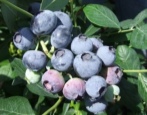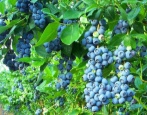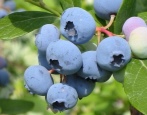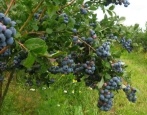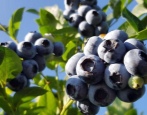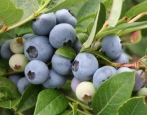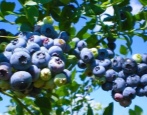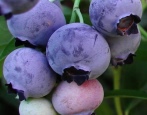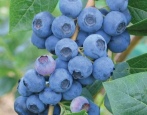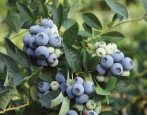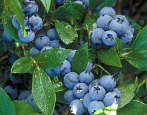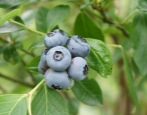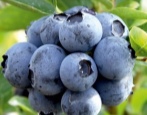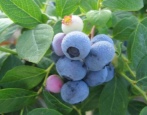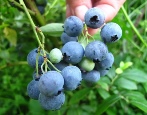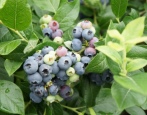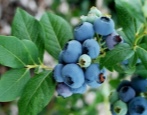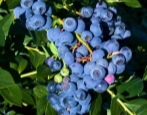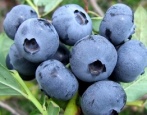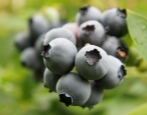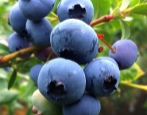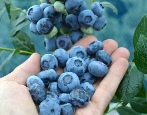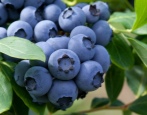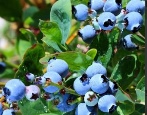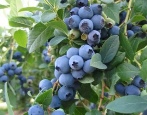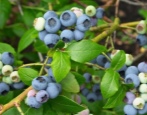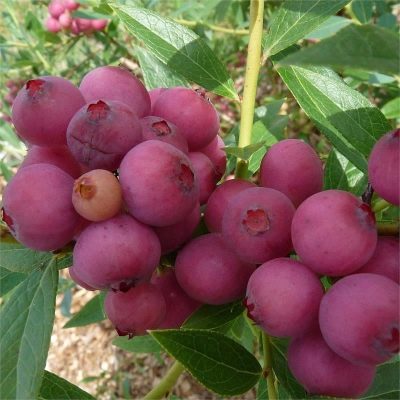
- Ripening terms: late ripening
- Growth type: tall
- Bush height, m: 1,2 - 3,0
- Taste: good, sweet
- Yield: medium
- Average yield: 3-4 kg per bush
- Fruit size: medium
- Fruit color: pink
- Description of the bush: powerful, tall, spreading
- Appointment: universal
Pink Lemonade is one of the most unusual blueberry varieties. The name Pink Lemonade in English means pink lemonade. It is associated with the unusual color of the berries and the sweet-floral aroma of blueberry flowers. Due to its high decorativeness, culture combines beauty and benefit.
Breeding history
The Pink Lemonade hybrid appeared in the process of a complex crossing of blueberry varieties: Ashie, Darrow and Shield. Breeding work has been carried out by American scientists for 10 years. The resulting hybrid variety has acquired most of the qualities from the "parent" Esha. And Darrow endowed him with evergreen foliage and delicious berries, which were very highly appreciated in their time. The variety inherited frost resistance from Shield blueberry, as well as the shape and structure of the bush.
An unusual blueberry variety was introduced into the culture in 2009. Pink Lemonade is considered a more suitable variety for growing in regions with mild climates, where the air does not cool below +17 degrees.
Description of the variety
The ornamental shrub is prone to vigorous growth and is distinguished by its power and density. It is tall, spreading, with numerous shoots looking up.
The tall bush reaches its peak growth at around 1.2-3.0 m. The universal variety always looks decorative: in the fall, glossy leaves are painted in bright shades of red, orange and pink. In spring, delicate white-pink flowers in the form of bells appear on the shoots.
The roots extend close to the surface of the ground and grow throughout the entire area around the bush, covering 60-70 cm in diameter. At the same time, they do not deepen more than 40 cm. The variety is resistant to diseases and pests.
Fruit characteristics
The diameter of the Pink Lemonade hybrid berry is 5-7 mm. They are considered large. When unripe, they are pale green, and as they mature, pink patches appear on them. The color evens out and becomes bright, like fuchsia, as soon as the berry is fully ripe.
Taste qualities
Pink blueberries have a pleasant taste with pronounced sweetness. The pulp has a dense texture, soft and juicy. The Pink Lemonade hybrid has a high sugar content and a lemon aroma, which corresponds to the name of the non-standard variety. The scent can be described as “sweet floral”.
Ripening and fruiting
A late-ripening variety does not ripen at the same time. Fruiting lasts from late July to early September.
Yield
On average, a high-yielding variety produces 3-4 kg of berries per bush. The first harvest is the most abundant, after which single fruits ripen on the bushes until October.
Growing regions
The Pink Lemonade plant is ubiquitous in its homeland, the United States. There you can find an abundance of bushes on the damp mountain slopes in the southeast of the country. Although the plant is moisture-loving, it firmly tolerates long dry periods.
Self-fertility and the need for pollinators
The variety is self-fertile, but for a bountiful harvest, it is recommended to plant an additional blueberry bush nearby.
Growing and care
Blueberry seedlings are sold in a container. Therefore, the seedling must be prepared for planting, held in water for about 15 minutes. This time is enough for the bush to be easily removed from the container.
The roots are freed from the ground, carefully straightened and placed in the hole. The plant needs to be buried 5-7 cm.The bush is watered and mulched, distributing sawdust under it with a layer of 5-8 cm.
It is advisable to plant pink blueberries in the spring, before the buds open. Bushes are planted in rows, in the direction from north to south. The planting scheme is chosen 120 × 150 cm. The sizes of the planting pits are calculated as 50 × 50 cm. A mixture of peat with sand and mineral additives (20–30 g / m2) is poured onto the bottom.
Water the pink blueberries a couple of times a week. After irrigation, the soil is loosened 8 cm deep. Fertilizing with mineral fertilizers is shown to seedlings 2 times per season:
in the spring, before sap flow;
in June.
Beds with plantings must be weeded. Weeds have a detrimental effect on young plants. Pruning is carried out on young and old blueberry bushes. As a standard, all diseased and weak branches are removed, small growths are cut off. 5-6 of the strongest and longest shoots are left to form.
It is also important to take care of it in a timely manner, removing diseased, damaged and old branches. Thinning of small growths is recommended, keeping 5-6 of the strongest and longest shoots.

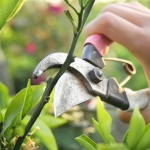
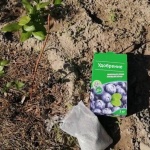
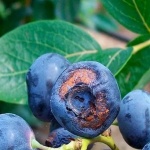
Winter hardiness and the need for shelter
The frost resistance of blueberries Pink lemonade is high, the plant tolerates temperatures down to -34 degrees without damage. In a snowy winter, to make it easier to survive the cold, it is better to bend the shoots to the ground and sprinkle them with abundant snow.

Location and soil requirements
The hybrid culture feels good on peat-sandy and peat-loamy, acidic, sandy loam soil. Rotted leaf litter will not interfere, which contributes to a significant improvement in the water regime and soil fertility.
If the soil composition in the area is alkaline or neutral, you need to prepare it before planting. You will have to acidify the soil under the bushes more than once, using sorrel infusion or water in which rhubarb was infused. Lemon juice is additionally added to this liquid.
Landing space
They are selected in accordance with the following criteria:
abundance of the sun (perhaps in partial shade, but there will be less fruit);
protection against blowing by gusty winds;
drained and moistened soil enriched with organic matter;
soil acidity level - pH within 3.8-5 (acidic);
structure - light sandstone, sandstone;
the occurrence of groundwater is no closer than half a meter.
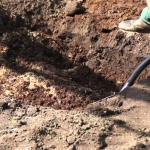
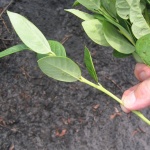
Review overview
It is most useful to eat pink blueberries raw - this way the berries will saturate the body with valuable elements. The fruits of this plant are a good source of vitamins C, K and dietary fiber.
Due to their high sugar content, pink berries are ideal for consumption unprocessed. They are also often used in cooking, for filling in baked goods and fragrant desserts.
The great advantage of this variety is that the dough in baked goods does not darken from them, as when using dark blue counterparts. Pink blueberry jam will have a familiar flavor, but an atypical deep pink color.
Benefits are not only the use of fruits, but also blueberry leaves. They have healing properties and are brewed according to traditional medicine recipes. In this case, the drink turns out to be aromatic and pleasant to the taste.
Like other varieties, Pink Lemonade is decorative and fulfills this function all four seasons. An ornamental shrub is covered with white-pink flowers in spring and brightly colored leaves in autumn. Landscapers are actively using pink blueberries when creating landscaping.
